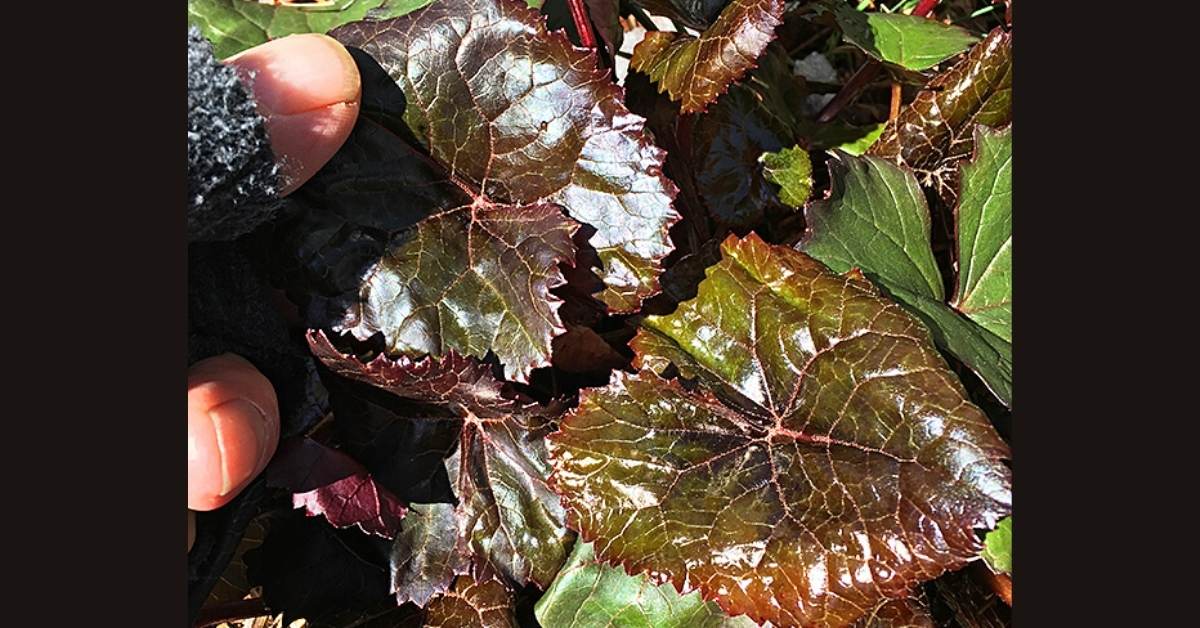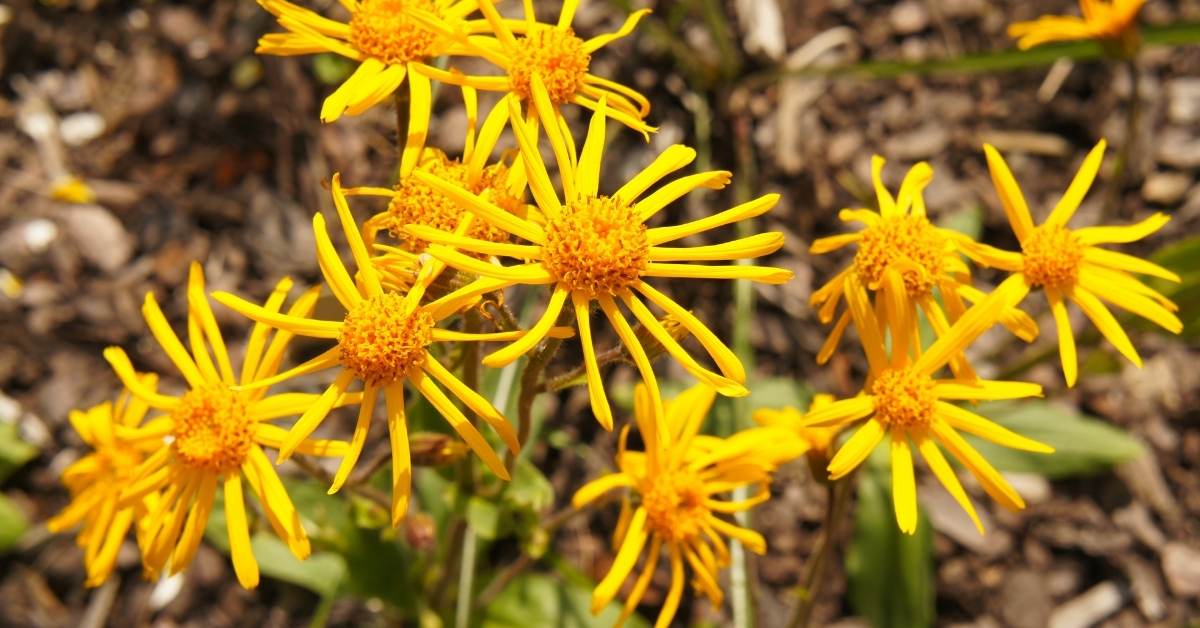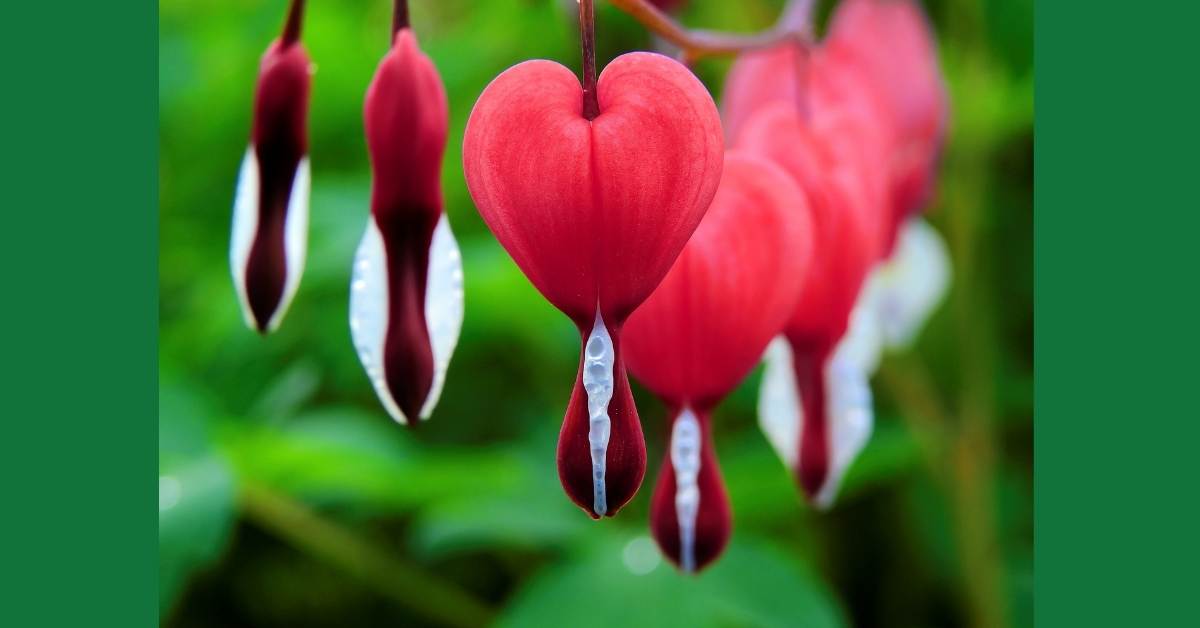After a historically warm March, Winter-like temperatures have returned in early April. Sure, the still-tiny tree buds aren’t fazed: They are still somewhat protected by their bud scales. Plus, they are barely out of dormancy and have a high proportion of solids to water. Ice can’t form when the water molecules are so thinly distributed.
-Here is the frost proof Ligularia Foliage – Britt Marie Crawford (Ligularia dentata)–
Flowers of daffodils or willows are delicate, too. This is their peak season, so it makes sense that, one way or another, these blossoms can withstand freezing even though they are fully engorged with water. Leathery foliage of rhodies, southern magnolias, and yuccas are fine, too.
Each leaf lasts through more than one Winter, let alone the intervening warm seasons. It’s no surprise that the foliage of these plants is both thick and leathery: Given the size of each leaf, it needs a high proportion of structure to withstand all of that freezing and thawing.
But what about the large, thin new leaves of this purple-leaved form of ligularia, Ligularia dentata ‘Britt Marie Crawford‘?
Frost Proof Ligularia Foliage

Herbaceous perennial
This is a herbaceous perennial, and all the leaves formed each Spring are shed that Fall. It would seem like a waste of energy to produce leaves with the substantial internal structure of those of broadleaved evergreens, only to discard them after the first frosts.
The foliage of herbaceous perennials is designed to be ephemeral and is shed just a few months after it emerges.
How can it also be as cold-impervious as foliage designed from the get-go to last a Winter—or even two or three—without damage?
One answer is that the foliage is so tough only when young. The leaves are ephemeral overall, and their unusual tolerance for cold is more ephemeral still.
Only as long as the foliage stays immature does it retain its frost resistance?
Immaturity is somewhat a function of water content alone: As each leaf matures, its cells retain more and more water, enlarging—inflating, actually—to their mature size.
As millions of the cells increase in size, so does the foliage they form. Frost resistance, then, is in inverse proportion to inflation.
Production of additional cells also helps achieve mature size too. But everything emerging in early Spring is doing so quickly as well as when temperatures would seem unhelpful for cell division, which would involve a peak of chemical coordination and, you’d think, the easy lubrication of lots of water.
The chance of a freeze every few hours would seem to give pause to the creation of new cells; better to inflate the ones already on hand.

As long as the weather remains chilly or even deeply freezing —as during these past few days, where the temperatures plunged into the low twenties Fahrenheit —the proportion of water in the cells remains low.
Does a given low temperature inhibit water absorption just enough to keep leaves deflated sufficiently to be frost-proof at that particular temperature?
Can the onset of a still lower temperature cause a contraction in the cells, conveniently expelling enough water so that they still don’t freeze? (Daffodil leaves and flowers both wilts during a cold snap but re-inflate when warmth returns.)
Here’s another possibility: The sap of these young leaves could also contain chemicals that function as antifreeze. In engines, antifreeze molecules distribute themselves throughout the radiator water so thick that the water molecules can’t clump together to form ice.
It takes a lot of antifreeze to do this, true: In your car, the ratio of antifreeze to water is usually 1:1.
Antifreeze would seem a high price for any leaf to pay—basically, having half of its available internal volume for water be taken up by other chemicals. Perhaps those chemicals have other functions besides lowering the freezing point of the cells’ water.
The striking freeze tolerance of Spring foliage is probably the result of these and still other factors.
What can seem at first a simple matter of inflation is more likely to be a complex choreography of quite a cast of chemical and physical factors, with the performance ebbing and flowing smoothly over many weeks from dead-of-Winter dormancy to full-on warm-weather activity.
But why go to the trouble of this who-knows-how-intricate Spring dance? Why not just wait until the weather is reliably warm to begin working on your new leaves? There are advantages to the early-season emergence of foliage. First, the days are surprisingly long already, despite the still-cool temperatures.
The longest day of the year is the first day of Summer—the day after that last day of Spring—not the middle of Summer. Why not take advantage of all that radiant energy?
Plus, when the foliage is large and overlapping, it can suppress the growth of nearby competitors. The foliage of a number of large-leaved perennials—think Heracleum, Onopordum, Rheum, Silphium, and Verbascum—is strikingly early to expand. The foliage of hostas waits until frost danger is past, but it expands even more quickly to catch up.
The foliage of my other ligularia species—L. fischeri, L. japonica, and L.x palmatiloba are as eager to emerge as ‘Britt Marie Crawford.’ At any age, Brit’s leaves are particularly showy because they are so intensely pigmented. Happily, their burgundy hue persists all season long.

